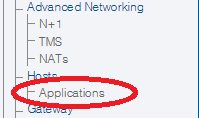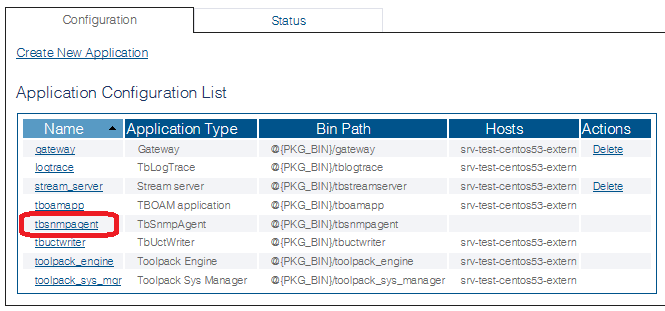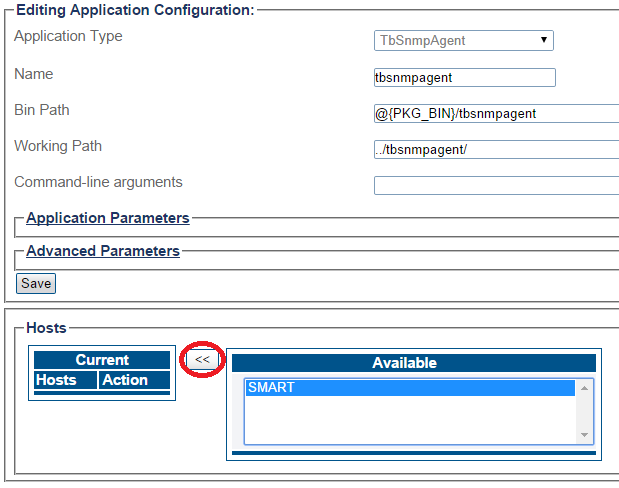Toolpack:Activating tbSnmpAgent B
(→List of Parameters) |
(→List of Parameters) |
||
| Line 59: | Line 59: | ||
|- | |- | ||
* Log Parameters | * Log Parameters | ||
| − | * [[Parameter: Default Trace Level|Default Trace Level]] | + | ** [[Parameter: Default Trace Level|Default Trace Level]] |
| − | * [[Parameter: Log File Path|Log File Path]] | + | ** [[Parameter: Log File Path|Log File Path]] |
| − | * [[Parameter: Max Log File Segment Size|Max Log File Segment Size]] | + | ** [[Parameter: Max Log File Segment Size|Max Log File Segment Size]] |
| − | * [[Parameter: Max Total Gzipped Log Files Size|Max Total Gzipped Log Files Size]] | + | ** [[Parameter: Max Total Gzipped Log Files Size|Max Total Gzipped Log Files Size]] |
* Network Lib Parameters | * Network Lib Parameters | ||
Revision as of 10:10, 9 June 2015
Applies to version(s): v2.8.
Before you begin, verify that the selinux service is disabled, or else it will prevent the SNMP service from starting. Connect SSH to the unit's management port and follow these instructions:
docs.telcobridges.com/mediawiki/index.php/SELinux_management
Once you are logged on to the Web Portal, follow these steps to activate the tbSnmpAgent application:
1) Click Applications in the navigation panel.
2) In the Applications Configuration list, select tbsnmpagent.
3) In the Application Configuration information window, select the available host. Click << to move it to the current hosts list.
4) Returning to the Applications Status information window, the tbsnmpagent should now appear in a Ready / Run state, indicating that it is active.
List of Parameters
Next Step
- Now that you have activated the SNMP agent application, you are ready to configure the application for your needs.



